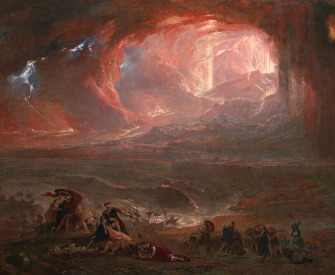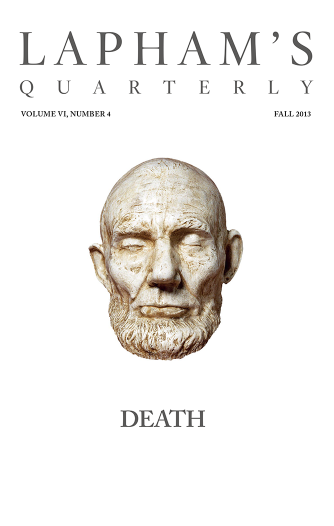The oldest voice in the world is the wind.
—Donald Culross Peattie, 1950Unintelligible Design
Charles Fort sees beneficial alternations in the seasons.
As if by design, or as if concordantly with an accentuation of lands and peoples in the north, the sun shines about a week longer in the north each year than in the south. The coldness in the less important Antarctic regions is more intense than in the Arctic, and here there is no vegetation like the grasses and flowers of the Arctic in the summertime.
Life withers southward. Musk oxen, bears, wolves, foxes, lemmings in the Far North—but there are only amphibious mammals in the Antarctic. Fields of Arctic poppies in the Arctic summertime—but summer in the Antarctic is gray with straggling lichens. If this earth be top-shaped, as some of the geodesists think, it is a bloom that is stemmed with desolation.
There are no deposits of coal in the southern parts that compare with deposits in the northern parts. The greatest abundance of oil supplies is north of the equator. It looks like organic preparation, in formative times, before human life appeared upon this earth, for civilizations that would grow up in the north. For ages, peoples of this earth were ignorant of the uses of coal and oil, upon which their later developments would depend.
In the organic sense, there is in the Arctic regions no great need for water. Though the coldness is not so intense here as it is commonly supposed to be, the climate nevertheless prevents much colonization. I have never read of a deluge in the Arctic. Thunderstorms are very uncommon. Some explorers have never seen a thunderstorm in the Arctic regions. And at the same time there are oppressively warm, or almost tropical, summer days in the Arctic. Instead of the enormous falls of snow, of common suppositions, the fall of snow in the Far North is “very light” (Vilhjalmur Stefansson). It looks like organically economic neglect of a part that cannot be used. Where, as reliefs, thunderstorms are not needed, there are, except as vagaries, no thunderstorms, though the summertime conditions in places of need and no need are much alike. See Angelo Heilprin’s account of his experiences in Greenland—summer days so nearly tropical that pitch melted from the seams of his ship.
The alternations that are known as the seasons are beneficial. They have come about accidentally, or they have been worked out by automatic design, or by all-pervasive intelligence, or by equilibration, if that word be preferred to the word intelligence. By the varying incidence of the sun, alternations of fruitfulness and rest could be brought about in the north and the south, but that left rhythms small in the tropics. It looks as if here, intelligently, were brought about the changes that are known as the dry season and the rainy season. I have never read a satisfactory explanation of this alternation in conventional meteorological terms.
In the April rains there is evidence, or might be, if we could have a rational idea as to what we mean by evidence, of design, and an automatically intelligent provision and control. Something is controlling the motions of the planets, according to all appearances that we take as appearances of control. Accepting this, I am only amplifying. Rains, of a gentle and frequent kind that is most beneficial to young plants, or best adapted to them, fall in April. Conventional biology is too one-sided. It treats of adaptation of plants to rain. We see also the adaptation of rains to plants. But there must be either the conventionally theological, or the organic, view to see this reciprocity. If one prefers to think of a kind and loving deity who is sending the April rains, he will have to consider—or rather will be faced by—records of other rains which are of the loving kindness of slaughter and desolation and woe.
There is some unknown condition that ameliorates the climate of Great Britain, as if this center of colony-sporing were prepared for by an automatic purposefulness, and protected from the rigors of the same latitudes in the west. Once upon a time, one of the wise men’s most definite concepts was the Gulf Stream. They wrote about its “absolute demarcation” from surrounding waters. They were as sure of the Gulf Stream as they are today that the stars are trillions of miles away. Lately so much has been written upon the inconceivability of the Gulf Stream having an effect upon climate farther from its source than somewhere around Cape Hatteras that I shall not go into that subject. Something is especially warming Great Britain, and it cannot be thought to be the Gulf Stream. It may be an organically providential amelioration. It may play out when the functioning period of Great Britain passes away. I am not much given to prophecy, but I’ll take this chance—that if England loses India, we may expect hard winters in England.

Charles Fort
From Lo! Fort, who spent his life studying unexplained phenomena, moved from New York City to London in 1920 to conduct research at the British Museum, where he would arrange his notes on torn scraps of paper. His references here to the ameliorations of latitude, and to the Gulf Stream, are scientifically sound: what keeps Britain and northern Europe temperate is a system of ocean currents in the North Atlantic—a heat conveyor known as the Atlantic Meridional Overturning Circulation—that has slowed by 15 percent over the course of the twentieth century.


